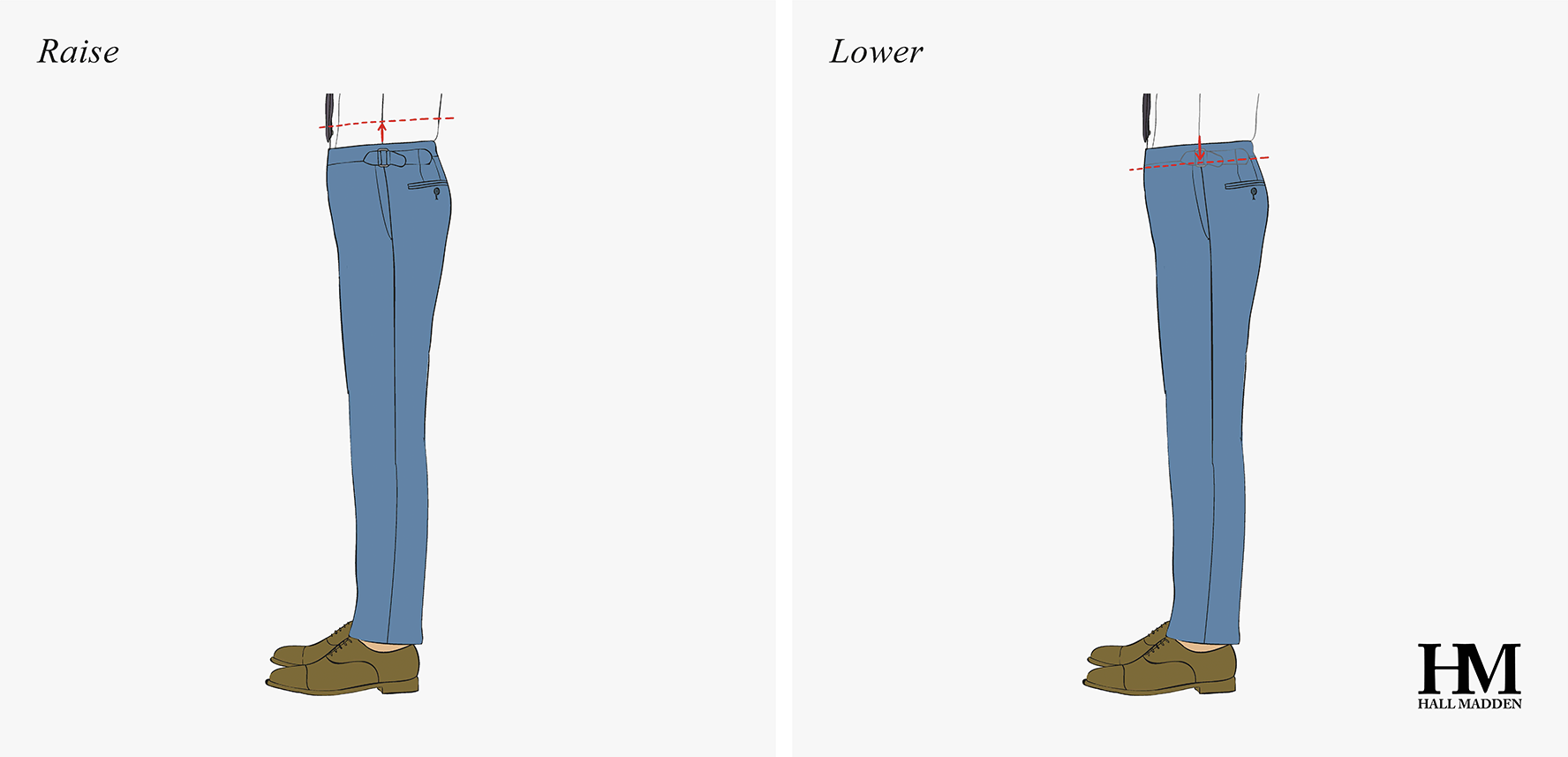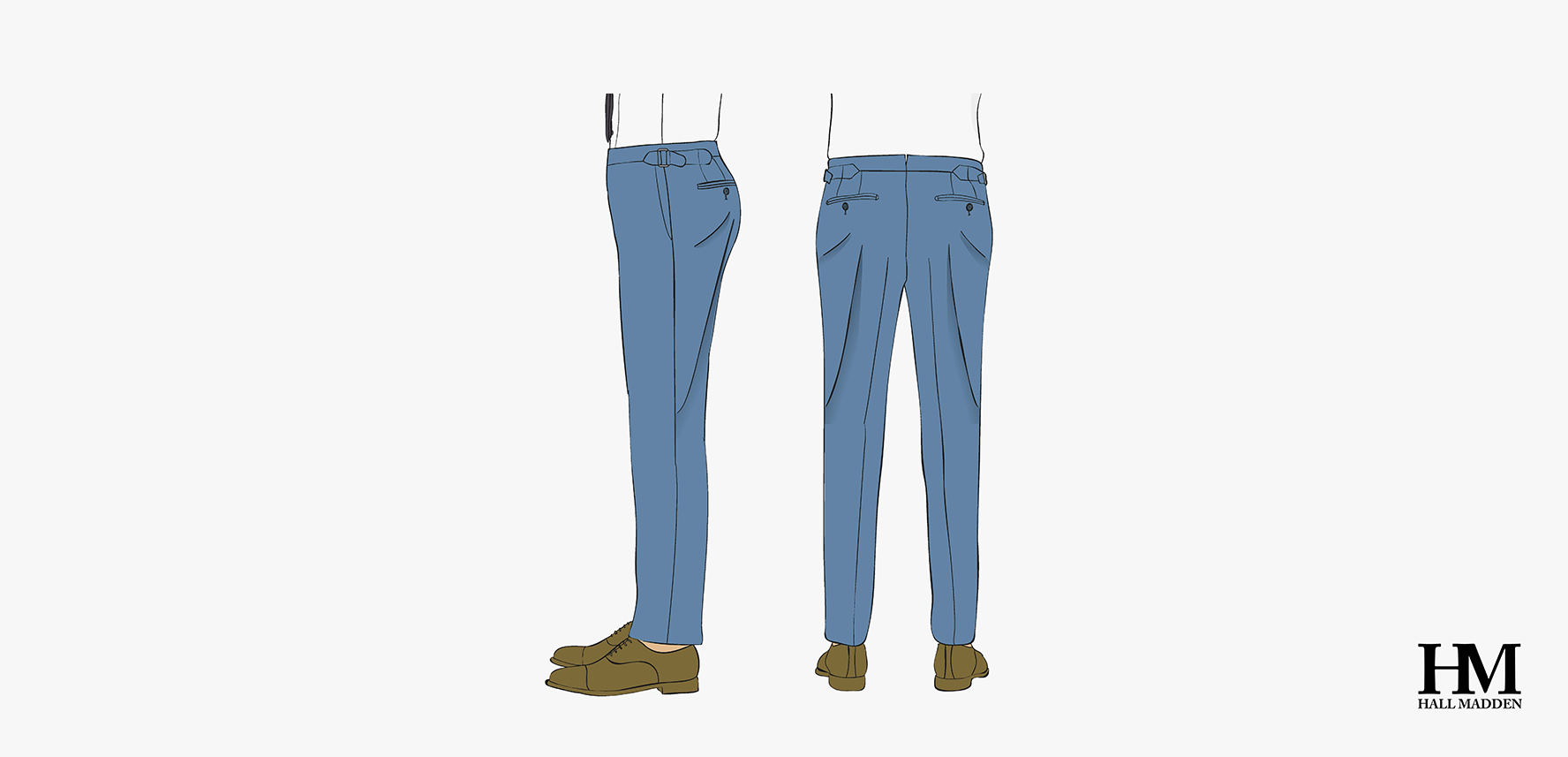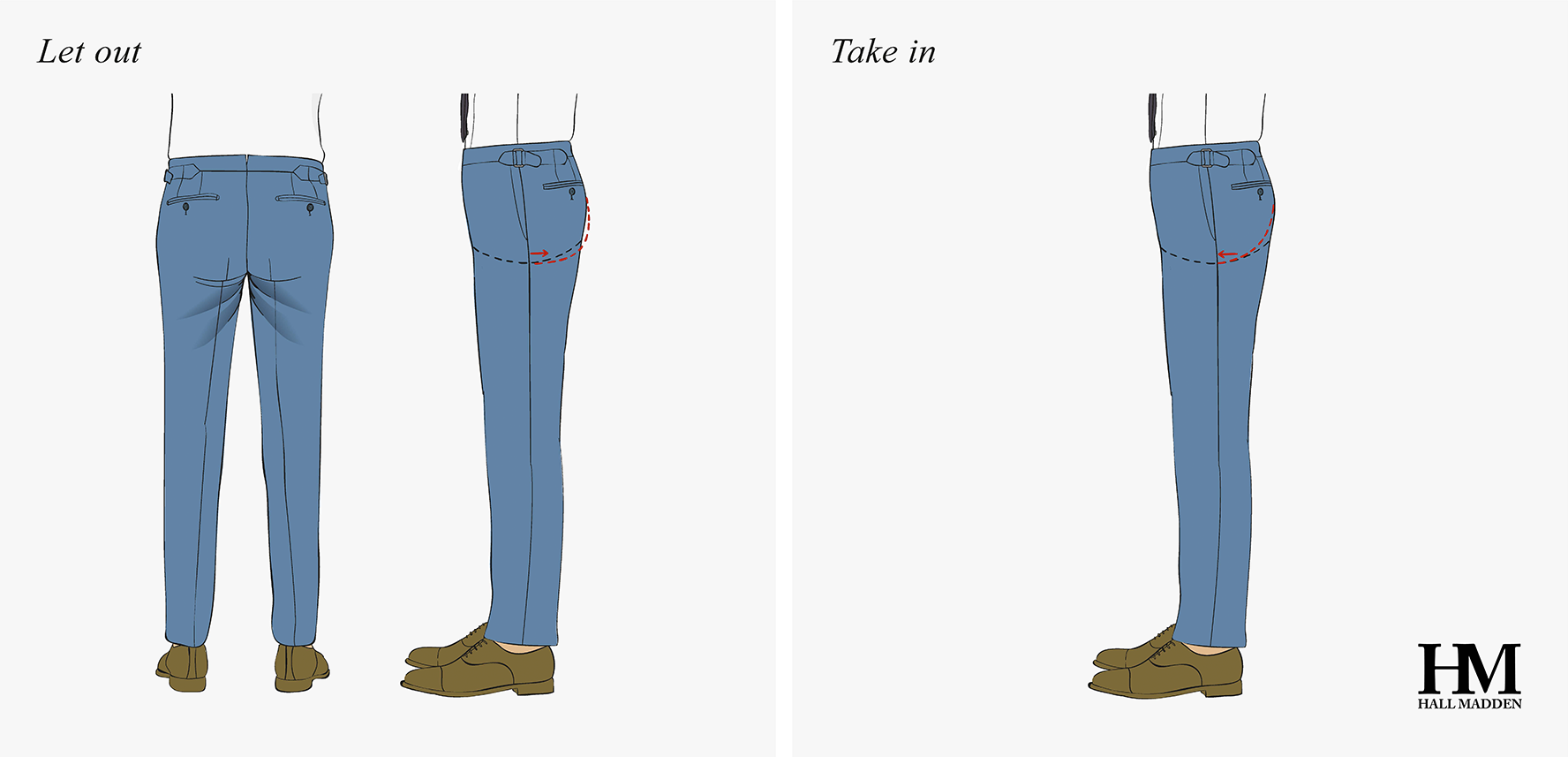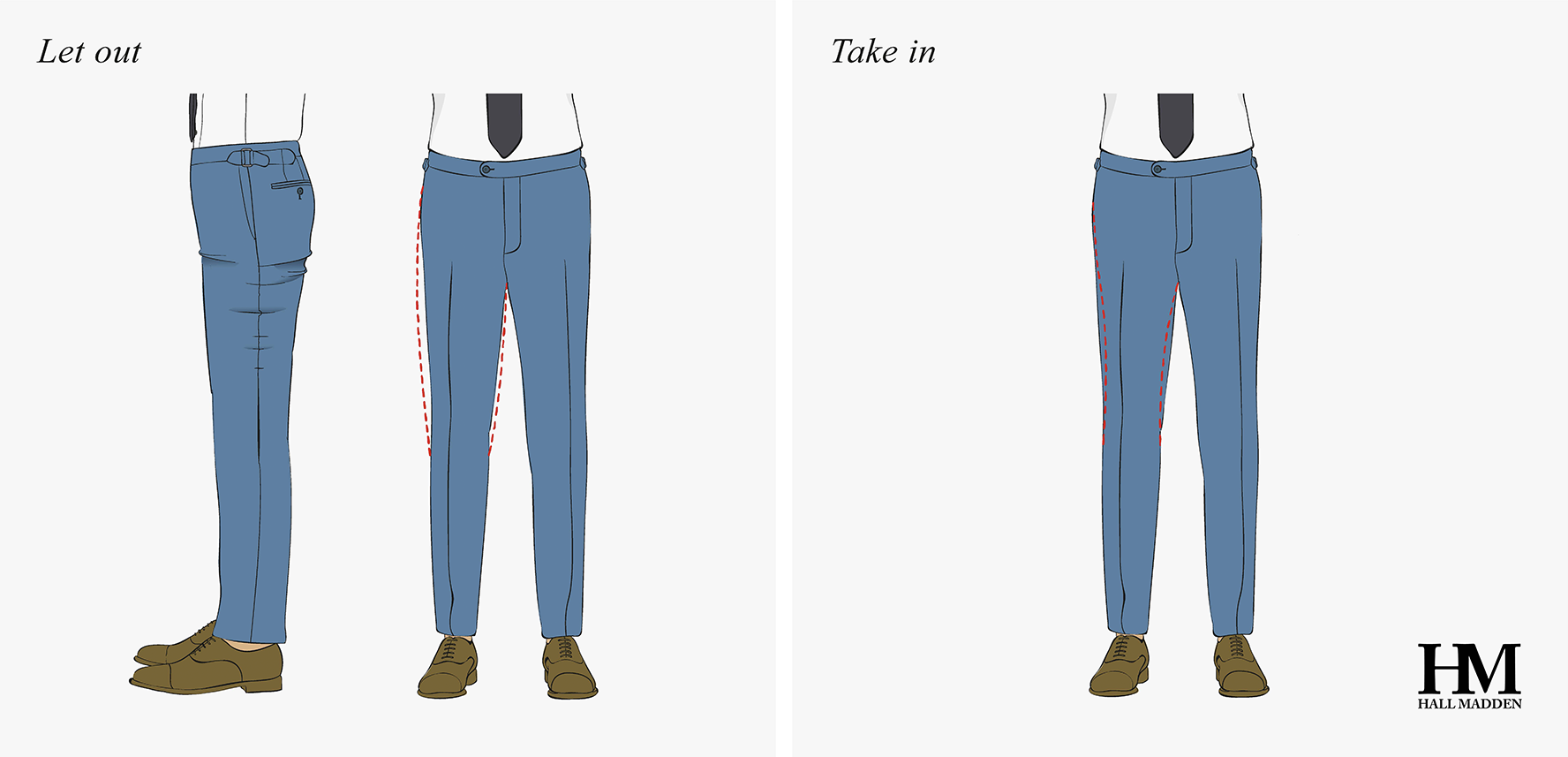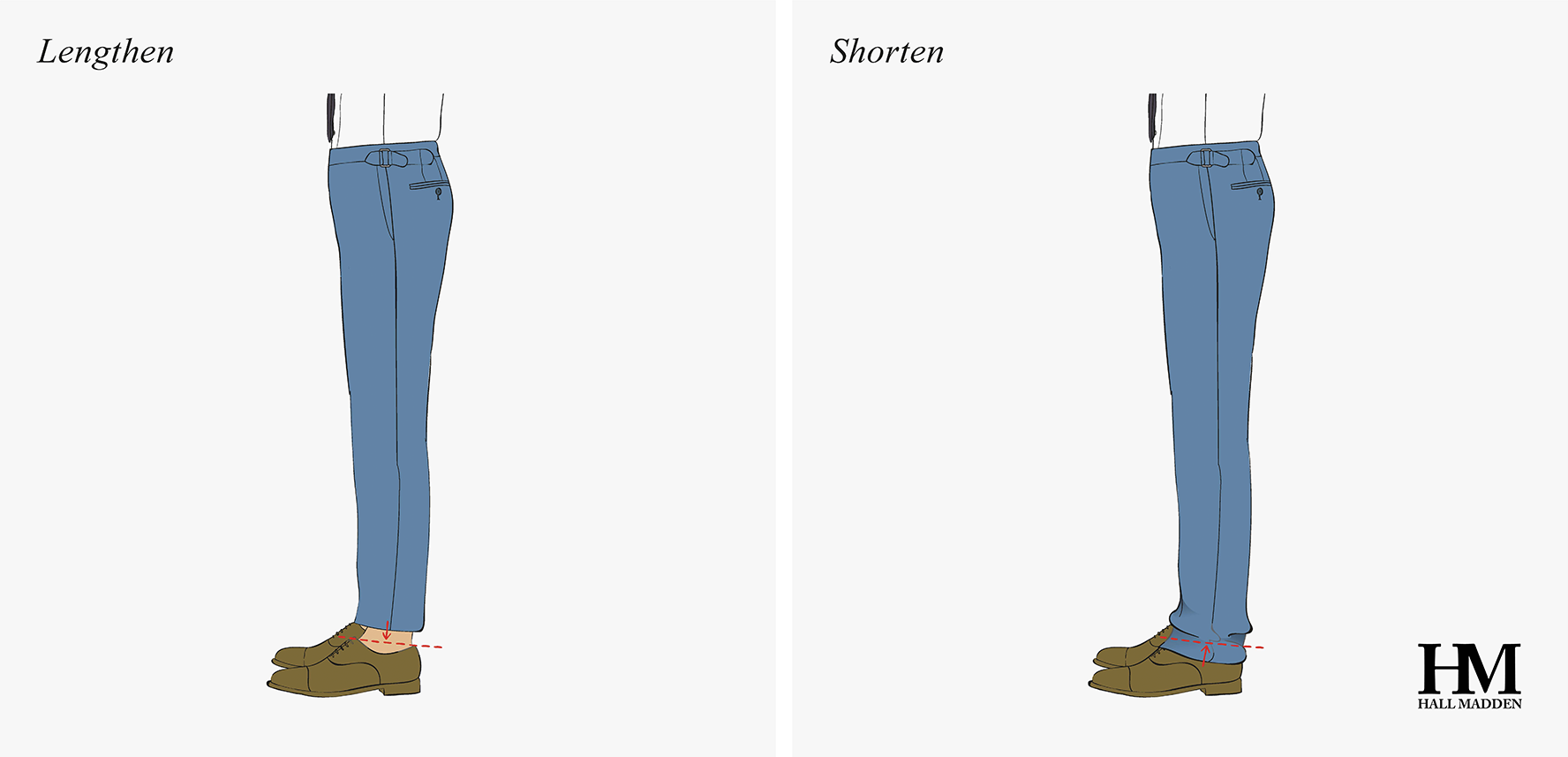Ever wonder how suit trousers should fit?
4 questions to ask yourself about any trouser
The ideal ‘correct fit’ is mainly subjective, but these classic tailoring guidelines offer some best practices to help you ensure the best fit possible.
The waistband should be able to stay in place without help from a belt.
A flattering trouser fits closely around the seat. Be aware that the trousers always start out slightly tighter since they will stretch out a bit during wearing.
The width of the hem is a matter of personal preference, and a good tool to make an individual style statement.
A good reference point for trouser length is that the back of the trousers should fall in a straight line down at the back of the leg and form a slight fold in the front where they hit the shoe. This means that a trouser with a narrow hem should also be slightly shorter than a trouser with a wider hem.
Common problems we see in trousers
Although it’s impossible to make a suit with zero wrinkles and a perfect drape we most certainly try!
Raise Total Rise
The waistband sits too low for the customer, when the crotch is positioned correctly.
When the customer pulls the waistband to their preferred position, the customer experiences tightness in the crotch.
The customer feels they need more coverage at both the front and the back.
Lower Total Rise
The waistband sits too high on the customer’s waist.
When the customer pushes the waistband down to their preferred position, the crotch becomes too baggy.
Raise Front Rise
The front of the waistband sits lower than the customer would like.
When the waistband is pulled up to the preferred position, vertical creases appear next to the crotch area.
Lower Front Rise
The front of the waistband sits higher than the customer would like.
The customer’s belly is pushing down the front of the waistband.
‘Smiley’ horizontal creases are visible just below the front the waistband.
Raise Back Rise
The waistband dips at the back of the trousers.
The back of the trousers doesn’t fully cover the seat of the customer, or doesn’t rest smoothly in the curve of the lower back.
Lower Back Rise
The waistband sits too high on the customer’s back.
The customer’s body is pushing the fabric of the waistband down at the back and/or sides.
Curved horizontal creases appear just below the back of the waistband, no lower than the back pockets. Otherwise this is caused by another problem.
Flat Seat
The customer does not have a strongly developed seat and might have hips that jut forward.
Horizontal creases are visible around the thighs just below the seat, as if there’s too much fabric in the length.
Prominent Seat
The customer has a strongly developed seat.
Creases might appear starting from the hip and/or knee pointing towards the highest point of the seat, even though the circumference around the seat is fine.
Let Out Crotch
The trousers are too tight in the crotch; the seam is cutting up into the customer’s rear, although the trousers fit well around the circumference of the seat and the crotch is hanging at the right height.
When walking, the customer’s forward leg movement is restricted.
Creases are visible at the back, starting at the crotch and pointing diagonally downwards.
Take In Crotch
The crotch is too loose on the customer; the seam across the crotch is too long.
There’s too much extra fabric around the front of the crotch, although the trousers fit well around the seat.
Let Out 1/2 Waist
The customer can’t close the waistband, or the waistband is too tight even though the trouser fits nicely around the seat.
Take In 1/2 Waist
The waistband is loose around the customer’s waist.
There is space visible between the waistband and the customer’s waist.
Let Out 1/2 Seat
The trousers are too tight around the circumference of the customer’s seat.
The side pockets are gaping open, and creases are appearing at the seat level at the side and back seams.
Take In 1/2 Seat
The trousers are too loose around the circumference of the customer’s seat.
Take In 1/2 Back Seam
The trousers fit well around the seat of the customer, but at the back seam (only) there is excess fabric.
The fabric is draping vertically, creating a slight curtain effect.
Let Out 1/2 Hip Curve
The customer has prominently curved hips.
The trousers fit well across the back of the seat, and are only pulling at the side seams.
The side pockets are gaping open, and creases are appearing next to and below them.
Take In 1/2 Hip Curve
The customer has flatter-than-usual hips.
The trousers fit well across the back of the seat, but are clearly loose at the side seams. You can pin down the excess fabric without moving the back or front panels of the trousers.
Vertical creases appear next to and below the side pockets, and the fabric is draping like a curtain.
Let Out 1/2 Thigh
The customer has strongly developed thighs.
The trousers are too tight around the thighs and seat.
Take In 1/2 Thigh
The trousers are too loose around the customer’s thighs and seat.
Let Out 1/2 Knee
The trousers are too tight around the knee.
Take In 1/2 Knee
The trousers are too loose around the knees.
Let Out 1/2 Hem
The trousers are too narrow at the hem for the customer’s preference.
Take In 1/2 Hem
The trousers are too wide at the hem.
Lengthen Length
The length of the legs is too short.
Shorten Length
The trousers fit well through the waist and crotch.
The legs are too long for the customer.


